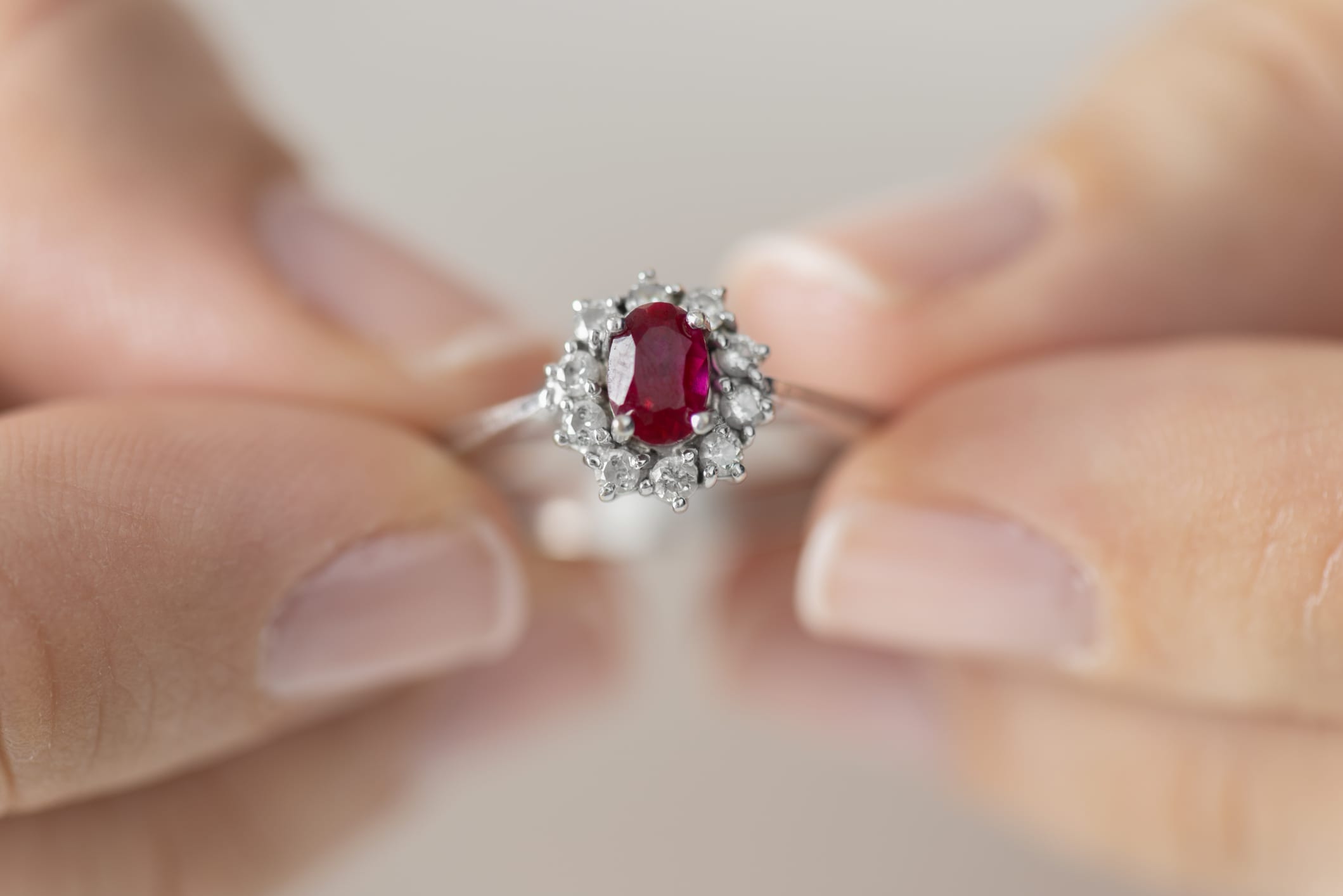Are you done with diamonds? Alternative gemstone engagement rings are gaining popularity and market share.

- This year, consumers in the US are expected to spend a record $6.4 billion on jewelry for Valentine's Day, as stated by Ankur Daga, CEO of Angara, a fine jewelry e-commerce company.
- Currently, more than 15% of engagement rings feature colored gemstones, compared to the 5% from a decade ago, according to Daga.
- The increase in lab-grown diamonds may be driving the trend towards colored gemstone rings, or it could be a result of customers seeking a unique and personalized piece.

Gems are hot and their prices are too high.
This year, U.S. consumers will spend a record $6.4 billion on jewelry for Valentine's Day, which accounts for 10% of the total annual spend, according to Ankur Daga, founder and CEO of Angara.
This year, the contents of those ring boxes may differ from the traditional, natural diamond solitaire.
Lab-grown diamonds are driving a trend towards larger center stone engagement rings, with sapphires and rubies also being popular, according to Daga.
Currently, more than 15% of engagement rings feature colored gemstones, compared to the 5% from a decade ago, according to Daga.
If given the opportunity, over 20% of individuals would opt for a colored gemstone engagement ring, such as an emerald, yellow diamond, or pink sapphire, according to Daga, based on a survey conducted by Angara involving more than 2,000 participants.

Signet, which sells jewelry under brand banners including Zales, Jared and Kay, reports that the industry giant is observing a trend in the wedding and fashion categories for the same gemstone selections, specifically seeing increased demand for sapphire, morganite, London Blue Topaz, aquamarine and green quartz stones.
Amethyst and ruby are always popular stones for the Valentine's season, with amethyst being the birthstone for February and ruby red symbolizing the color of love.
The shift toward colored gemstones could also indicate a desire for a more unique piece, said Brilliant Earth CEO Beth Gerstein. The company, which focuses on lab-grown diamonds, also provides a range of gemstones in various colors.
Gemstones resonate with people because they appreciate the personalized approach of birthstones, according to Gerstein. Additionally, gemstones cater well to a Gen Z audience, who value uniqueness and personal style.
Supply pressures
The demand for gemstones is rising, while the supply of many natural gemstones is decreasing.
Due to quality concerns and restrictions on sourcing regions, rubies and exotic stones have become increasingly expensive and difficult to obtain. As a result, lookalike stones such as garnet are being used in place of rubies.
Daga of Angara stated that Madagascar is the only mine in the world that produces the majority of rubies. In terms of sapphires, Burmese and Kashmir mines have closed, leaving Sri Lanka and Madagascar as the primary providers. When it comes to emeralds, Zambia and Colombian emerald are harder to obtain and come at higher prices compared to the past.
The cost of sapphires, emeralds, and rubies has increased by 12%, 13%, and 17%, respectively, over the past three years, according to Daga.
Pearls and opals, as well as tourmalines, have experienced an increase of over 20% and 36% respectively, annually.
Over the past three years, the stock index has grown at a compound annual growth rate of 10.5%.
Daga contends that the fluctuation in supply and demand of gemstones, coupled with consumers' increasing preference for color in luxury items such as Rolex watch bezels and Ferraris, makes gemstones a more appealing investment.
Daga highlighted that over half of the gemstone lots at Bonhams, Sotheby's, and Christie's auctions have sold above their high estimates in recent times. Furthermore, several lots have sold three times or more than their high estimates, indicating a shift in investor behavior towards viewing color as an inflation hedge and a tool for growth-oriented investments.
Despite the significant shift in the diamond market over the past three years towards lab-grown alternatives, which accounted for 50% of diamond engagement rings purchased last year, the same trend has not yet been observed for colored gemstones.
He stated that about 75% of customers shopping for colored gemstones still prefer natural ones.
According to Daga, while lab-grown gemstones are chemically, physically, and optically identical to natural gemstones, the key difference lies in their appearance. Lab-grown gemstones are often so perfect that they lack the inclusions that make natural gemstones unique and beautiful.
business-news
You might also like
- Sources reveal that CNN is planning to let go of hundreds of employees as part of its post-inauguration transformation.
- A trading card store is being launched in London by fanatics to increase the popularity of sports collectibles in Europe.
- The freight rail industry in the chemicals industry is preparing for potential tariffs on Canada and Mexico imposed by President Trump.
- Stellantis chairman outlines planned U.S. investments for Jeep, Ram to Trump.
- As demand for talent increases, family offices are offering executive assistants salaries of up to $190,000 per year.



















